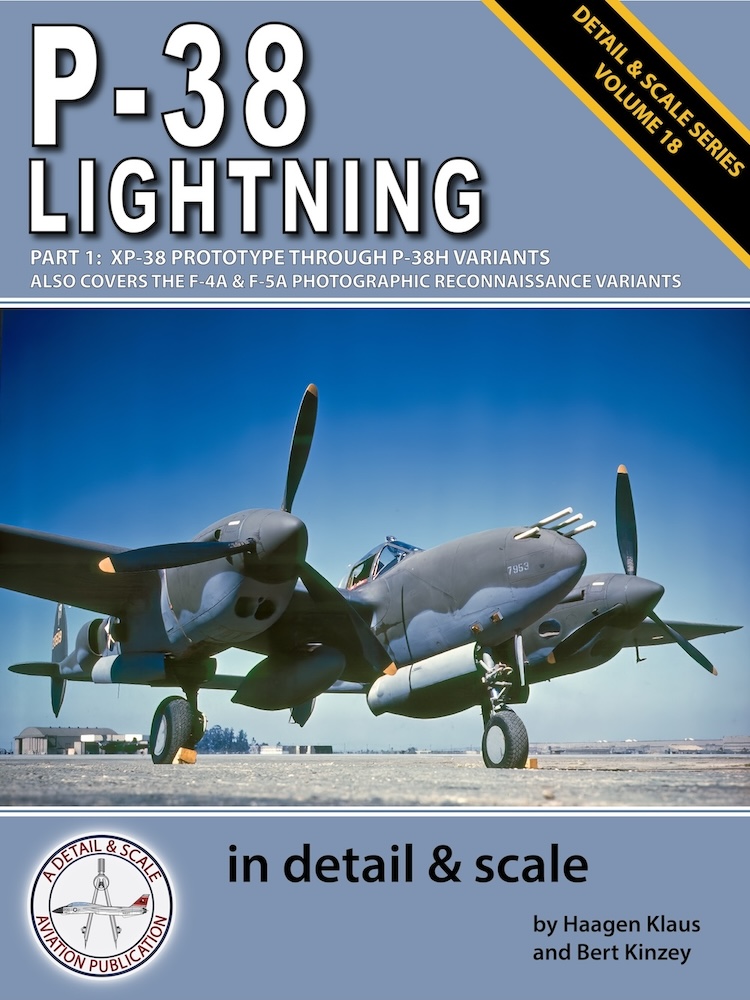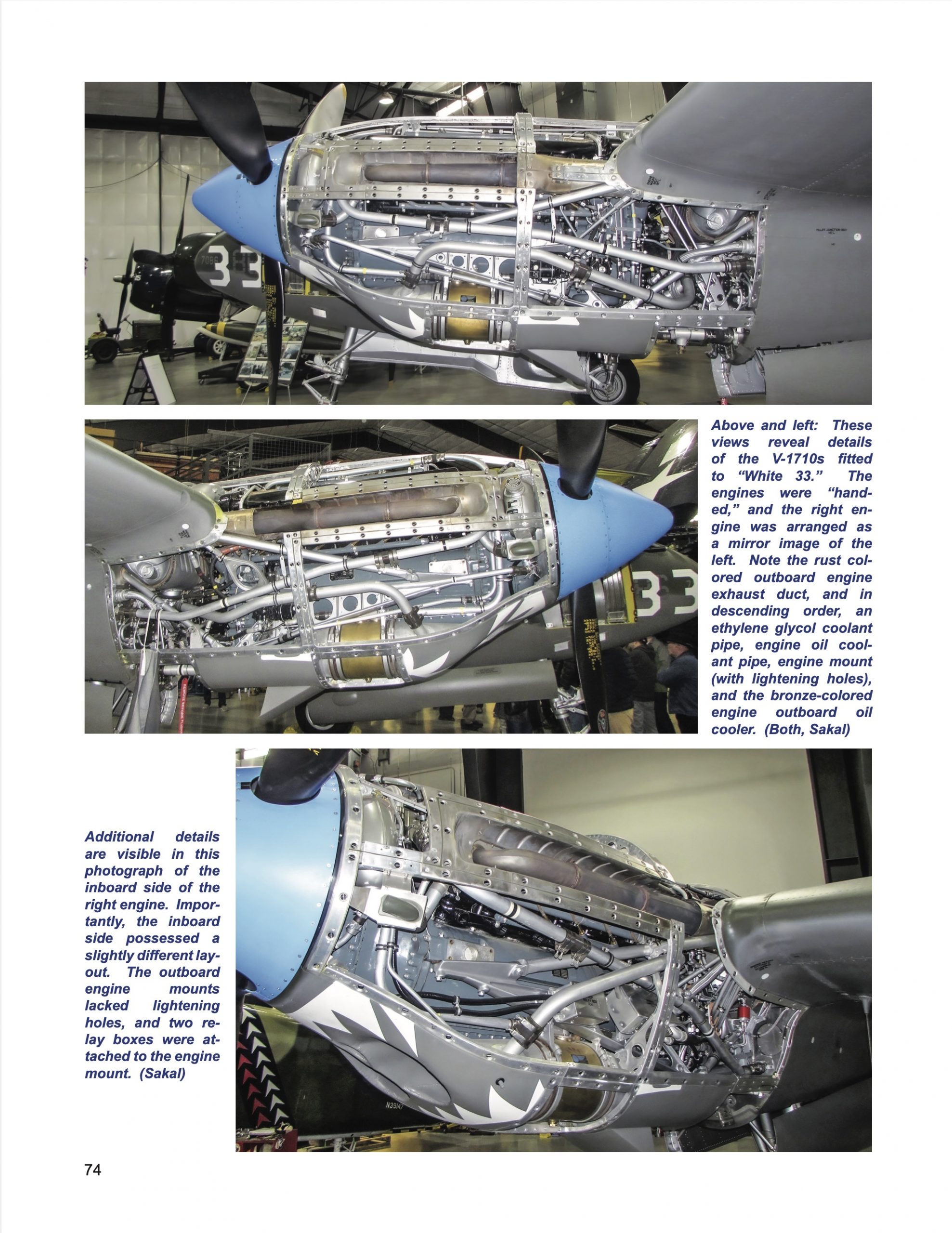
P-38 Lightning in Detail & Scale, Part 1
XP-38 Prototype Through P-38H Variants (Also Covers the F-4A & F-5A Photographic Reconnaissance Variants)
Book Features:
The Germans called it Der Gabelschwanz Teuful or “The Forked-tailed Devil.” The Japanese referred to it as two planes with one pilot. But whatever it was likened to, the Lockheed P-38 Lightning represented a giant step forward in combat aircraft design and technology. With its twin-engine, twin-boom design, and a fuselage pod between the booms, the P-38 Lightning was a radically different design from any previous fighter aircraft. Its high speed and long range, coupled with its firepower being concentrated in the fuselage pod, made it one of the most formidable fighters of World War II. Ideally suited for operations in the Pacific, it scored more aerial victories in that theater than any other USAAF fighter.
In 1998, Detail & Scale published two books on the P-38 Lightning. These publications were very popular but have been out-of-print for quite some time. This publication, P-38 Lightning in Detail and Scale, Part 1is the first of two newly expanded, updated, and revised editions of Detail & Scale’s previous two-part coverage of the Lightning. A considereable number of color photographs, both historical and detail in nature, have been added. The focus of this volume is on the so-called early Lightnings, beginning with the first XP-38 prototype and continuing through the P-38H. Also included are the related F-4, F-4A, and F-5A photographic reconnaissance variants.
When it first flew in 1939, the Lightning was larger, faster, and more heavily armed than any fighter aircraft in the world. Early variants of the P-38 found themselves thrust into combat as the United States entered World War II. In Europe, early Lightnings were plagued with problems associated with British fuels interacting with their exhaust-driven, turbo-supercharged engines at high altitudes. Elsewhere, in northern Africa, the Mediterranean, the Aleutians, and throughout the Pacific, the P-38 performed far more effectively and produced outstanding results in combat. America’s top two aces of World War II, Richard Bong and Thomas McGuire, scored all of their victories in the large P-38 while flying against smaller, more nimble Japanese aircraft known for their maneuverability. More than one hundred other aces scored all or most of their victories in the Lightining.
This publication features expanded and revised historical overviews of the P-38s, along with detailed descriptions of each P-38 variant. The Early Lightning Details chapter also features new and expanded content compared to the original 1998 book. The chapter is illustrated with scores of detailed and meticulously restored photographs accompanied by captions that illustrate both important features and subtle differences between P-38 variants. Some of these images are original archival material, while others were chosen from hundreds of photos taken specifically for this book by the authors and their contributors. Of note, the Lightning Details chapter in P-38 Lightning in Detail and Scale, Part 1 features photos of the P-38F “Glacier Girl” to be found nowhere else. This P-38 was recovered from under the Greenland ice pack in 1992. Bert Kinzey took these photos during the restoration of “Glacier Girl” in 1998 and the photographs illustrate the details of the Lightning that would otherwise be difficult or impossible to represent.
As with all of our publications in the Detail & Scale Series, the book concludes with a Modelers Section that features reviews of the plastic model kits of these early P-38 variants. Each review impartially and objectively highlights each kit’s strengths and weaknesses, along with ways that a scale modeler can correct or improve upon accuracy and details.
P-38 Lightning in Detail & Scale, Part 1 contains over 200 high-resolution photographs along with dozens of detailed line drawings of the P-38 variants covered. The Early Lightning Details Chapter alone has 122 photographs
A DETAIL & SCALE SERIES BOOK
Print: 102 pages, 200+ photos (97 in color), two dozen illustrations
Digital: 149 pages, 200+ photos (97 in color), two dozen drawings
Need a Kindle Reading App?
You can read the Kindle version of our books on Smartphones, Computers, Tablets and even a Cloud Reader where you can read our books in your web browser.
Digital: 149 pages, 200+ photos (97 in color), two dozen drawings
Need the Apple iBook App?
You can read the iBook version of our book on the Apple iPad or on any Mac Computer.
Click here to go to the iTunes Store for the free download of the iBooks App.
Digital: 149 pages, 200+ photos (97 in color), two dozen drawings
Need the Google Play eBook App?


















